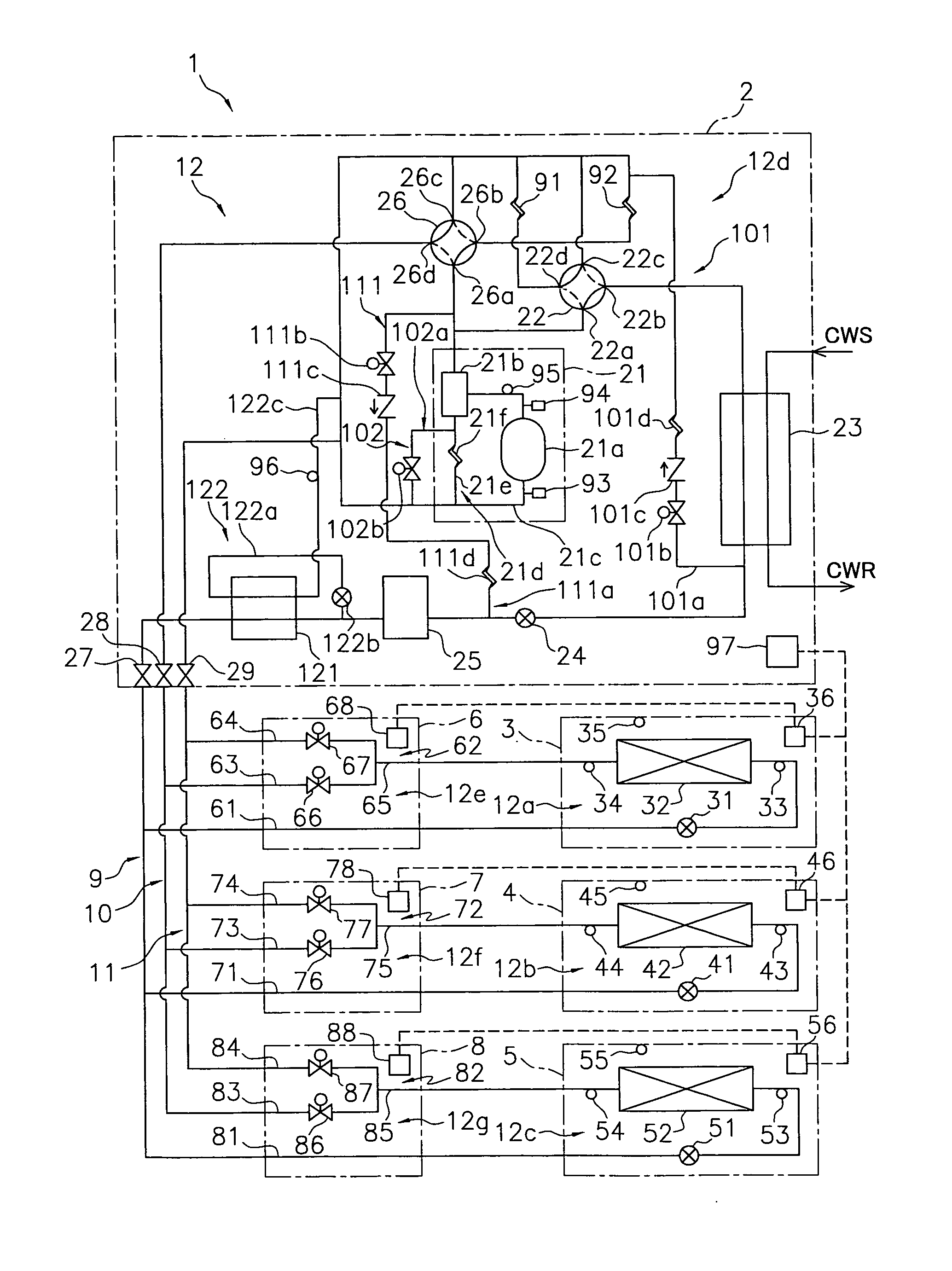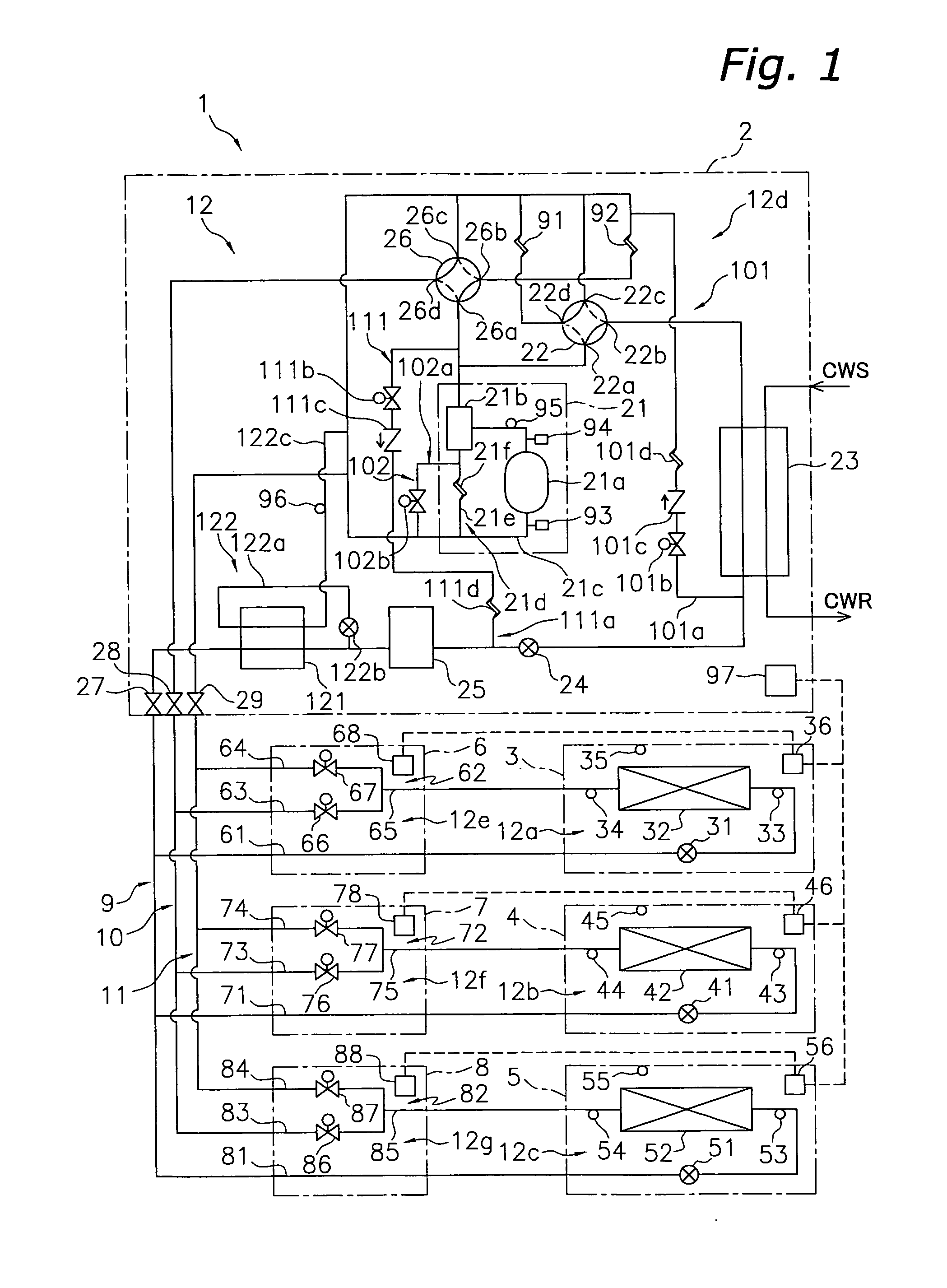Air Conditioner
a technology for air conditioners and air conditioners, applied in indirect heat exchangers, refrigeration components, light and heating apparatus, etc., can solve the problems of increasing the number of parts and cost, the inability to reduce the opening of expansion valves that much, and the inability to control the evaporation ability
- Summary
- Abstract
- Description
- Claims
- Application Information
AI Technical Summary
Benefits of technology
Problems solved by technology
Method used
Image
Examples
modification 1
(4) Modification 1
[0167]In the aforementioned air conditioner 1, the first oil returning circuit 101 and the first bypass circuit 102 are disposed in order to expand the control width of the control of the evaporating ability of the heat source heat exchanger 23 by the heat source expansion valve 24. However, as mentioned previously, because the heat source expansion valve 24 is closed during the oil recovery operation, the flow of the refrigerant from the liquid refrigerant communication pipe 9 to the heat source heat exchanger 23 stops, and the heating operation of the utilization unit conducting the heating operation of the utilization units 3, 4 and 5 stops (the utilization units 3, 4 and 5 in the heating operating mode; see FIG. 5) or the heating ability drops (the utilization units 4 and 5 in the simultaneous cooling and heating operating mode (evaporation load); see FIG. 8), even though it is a short period of time. For this reason, as shown in FIG. 10, the air conditioner 1 ...
modification 2
(5) Modification 2
[0169]In the aforementioned air conditioner 1, the first oil returning circuit 101, the first bypass circuit 102, the pressurizing circuit 111, the cooler 121 and the cooling circuit 122 (further including the second bypass circuit 102 in the case of modification 1) are disposed in the heat source unit 2 in order to expand both the control width of the control of the evaporating ability of the heat source heat exchanger 23 by the heat source expansion valve 24 and the control width of the control of the condensing ability of the heat source heat exchanger 23 by the heat source expansion valve 24. However, when the control width of the control of the evaporating ability of the heat source heat exchanger 23 is ensured and it is necessary to expand only the control width of the control of the condensing ability of the heat source heat exchanger 23, for example, just the first oil returning circuit 101 and the first bypass circuit 102 (further including the second bypa...
modification 3
(6) Modification 3
[0170]In the aforementioned air conditioner 1, four-way switch valves were used as the first switch mechanism 22 and the second switch mechanism 26, but the switch mechanisms are not limited thereto. For example, as shown in FIG. 12, three-way switch valves may also be used as the first switch mechanism 22 and the second switch mechanism 26.
PUM
 Login to View More
Login to View More Abstract
Description
Claims
Application Information
 Login to View More
Login to View More - R&D
- Intellectual Property
- Life Sciences
- Materials
- Tech Scout
- Unparalleled Data Quality
- Higher Quality Content
- 60% Fewer Hallucinations
Browse by: Latest US Patents, China's latest patents, Technical Efficacy Thesaurus, Application Domain, Technology Topic, Popular Technical Reports.
© 2025 PatSnap. All rights reserved.Legal|Privacy policy|Modern Slavery Act Transparency Statement|Sitemap|About US| Contact US: help@patsnap.com



